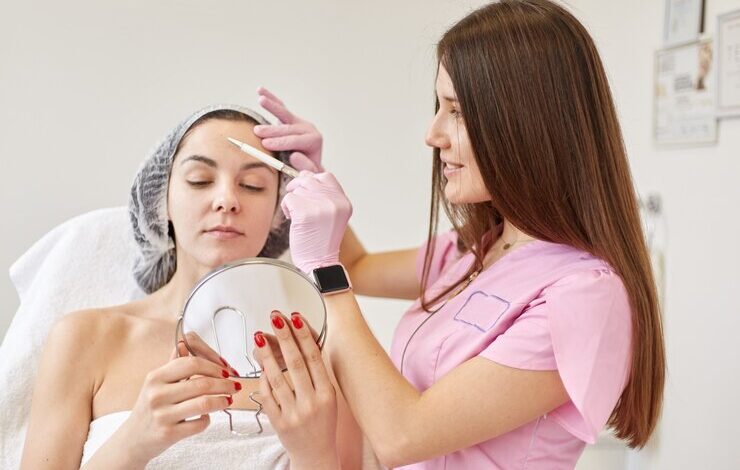https://comoquitarr.club/como-quitar-las-verrugas/

Warts, medically known as verrugas, are a common skin issue that affects millions of people worldwide. These small, grainy growths, often rough to the touch, can appear on various parts of the body, causing not only discomfort but also embarrassment. They are caused by the human papillomavirus (HPV), which penetrates the skin through tiny cuts or abrasions. While warts are generally harmless and tend to disappear on their own over time, many people seek effective ways to remove them due to their unsightly appearance and potential to spread.
In this comprehensive guide, we’ll explore the different types of warts, various home remedies and over-the-counter treatments, professional removal options, and preventive measures to keep warts at bay. By the end of this blog post, you’ll have all the information you need to tackle warts confidently and maintain healthy, clear skin.
Understanding Warts and Their Causes
What Are Warts?
Warts are benign skin growths caused by the human papillomavirus (HPV). They can appear anywhere on the body, though they are most commonly found on the hands, feet, and face. Depending on the type, warts can have a rough, grainy surface or be smooth and flat. Despite being non-cancerous, warts can be bothersome and may cause discomfort, especially if they develop on pressure points like the soles of the feet.
How Do Warts Form?
The HPV virus responsible for warts enters the skin through small cuts or scrapes. Once the virus infects the skin, it causes rapid cell growth, leading to the formation of a wart. The appearance of warts varies depending on their type and location. For example, warts on the hands and feet are typically more raised and rough, while those on the face and legs are often smoother and flatter.
Common Causes of Warts
Warts are highly contagious and can spread through direct contact with an infected person or by touching surfaces contaminated with the virus. Sharing personal items like towels, razors, or shoes can also increase the risk of spreading warts. Additionally, a weakened immune system can make individuals more susceptible to developing warts.
Types of Warts
Common Warts
Common warts, also known as verruca vulgaris, typically appear on the hands and fingers. They are rough, elevated, and have a cauliflower-like appearance. These warts are usually painless but can become bothersome when located in areas prone to friction or frequent contact.
Plantar Warts
Plantar warts develop on the soles of the feet and can be painful due to the pressure exerted while walking or standing. They often have a hard, thickened skin layer with a small, black dot in the center, which is a blood vessel. Plantar warts can grow in clusters and are sometimes referred to as mosaic warts.
Flat Warts
Flat warts, or verruca plana, are smaller and smoother than other types of warts. They commonly appear on the face, neck, and legs. Flat warts often grow in large numbers, forming clusters that can be difficult to treat. They are more prevalent in children and teenagers.
Home Remedies for Wart Removal
Salicylic Acid
Salicylic acid is a common and effective treatment for warts. Available in various forms such as gels, liquids, and pads, this acid works by softening and gradually removing the wart’s layers. To use salicylic acid, soak the wart in warm water for a few minutes, apply the acid, and cover it with a bandage. Repeat this process daily until the wart disappears.
Duct Tape
Though unconventional, duct tape has been used successfully as a wart removal method. Cover the wart with a piece of duct tape for six days, then remove the tape and soak the wart in warm water. Gently file away the dead skin with a pumice stone or emery board. Repeat the process until the wart is gone.
Apple Cider Vinegar
Apple cider vinegar’s acidic nature can help dissolve warts. To use, soak a cotton ball in apple cider vinegar and apply it to the wart, securing it with a bandage. Leave it on overnight and remove it in the morning. Continue this treatment for several weeks or until the wart falls off.
Over-the-Counter Treatments
Freezing Kits
Freezing kits, also known as cryotherapy kits, are widely available over-the-counter wart treatments. These kits use a combination of propane and dimethyl ether to freeze the wart, causing it to blister and eventually fall off. Follow the instructions carefully for best results, and avoid using these kits on sensitive skin areas.
Wart Removal Patches
Wart removal patches contain salicylic acid or other medicated ingredients that help dissolve the wart over time. Apply the patch directly to the wart and change it as directed in the product instructions. These patches are convenient and discreet, making them a popular choice for treating warts on visible skin areas.
Liquid Solutions
Liquid wart removers are another effective over-the-counter option. These solutions typically contain salicylic acid or other keratolytic agents that help break down the wart tissue. Apply the liquid to the wart using the included applicator and follow the instructions for frequency and duration of use.
Professional Treatments
Cryotherapy
Cryotherapy is a common professional treatment for warts, involving the use of liquid nitrogen to freeze the wart. This process causes the wart to blister and eventually fall off. Cryotherapy sessions are typically quick and may require multiple treatments for complete removal.
Laser Therapy
Laser therapy uses intense light beams to target and destroy wart tissue. This method is often reserved for stubborn or recurring warts that have not responded to other treatments. Laser therapy is precise and minimizes damage to surrounding skin, but it may require several sessions.
Surgical Removal
Surgical removal is a last-resort option for warts that do not respond to other treatments. A dermatologist can remove the wart using methods such as excision (cutting it out) or curettage (scraping it off). This procedure is often performed under local anesthesia and may result in a small scar.
Prevention Tips
Maintain Good Hygiene
Practicing good hygiene is crucial for preventing warts. Wash your hands regularly, especially after touching common areas or using public facilities. Avoid sharing personal items like towels, razors, and shoes, as they can harbor the virus.
Avoid Direct Contact
To reduce the risk of spreading warts, avoid direct contact with warts on other people or yourself. If you have warts, keep them covered with a bandage to prevent them from coming into contact with others.
Boost Your Immune System
A strong immune system can help prevent the development of warts. Maintain a healthy lifestyle by eating a balanced diet, getting regular exercise, and managing stress. Consider incorporating immune-boosting foods like fruits, vegetables, and lean proteins into your diet.
Conclusion
Warts are a common and often frustrating skin condition, but with the right knowledge and treatments, they can be effectively managed and removed. Whether you choose home remedies, over-the-counter treatments, or professional options, it’s essential to find a method that works best for you.




